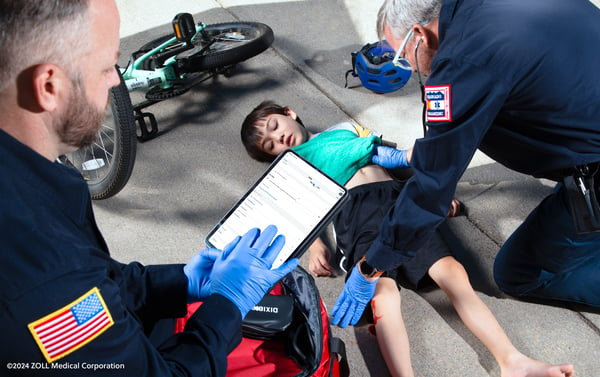Chart Smarter: Why One EMS Agency Ditched Paper for Mobile Tech
Strategies for Reducing Payment Uncertainty With Less Effort and More Satisfaction
In a recent webinar hosted by Healthcare Business Management Association (HBMA), AR optimization expert, Juli Smith, discussed the growing problem of payment uncertainty and shared her insights on tools and strategies that can improve revenue and reduce administrative burden for billers
Was this information valuable?

In a recent webinar hosted by Healthcare Business Management Association (HBMA), AR optimization expert, Juli Smith, discussed the growing problem of payment uncertainty and shared her insights on tools and strategies that can improve revenue and reduce administrative burden for billers.
Current healthcare industry challenges have been greatly exacerbated by the COVID-19 pandemic. Smith boils it down to five factors that are driving payment uncertainty:
- Unpredictable Volume — Elective procedures are on or off, and hospitals are either empty or overflowing. With volume up, down, or riding a rollercoaster, it is very difficult to meet the needs of patients, let alone forecast revenue.
- Increased Costs — A recent report estimates that deferred or cancelled treatments represent more than $40 billion in increased healthcare costs. Additionally, hospital executives anticipate bigger shifts in payer mixes in the future, with a greater number of uninsured patients coming into the system.
- Increased Denials — Since the onset of COVID-19, claim denials have risen by 11%, with half of those caused by front-end revenue cycle issues.
- Lost Revenue — Over 9% of expected reimbursement is lost to a reduction in federal payments, bad debt, and an increase in uncompensated care. In addition, there have been massive losses to providers at all levels due to COVID-19.
- Staffing Shortages — Extreme staffing shortages have healthcare workers feeling overworked and burnt out. When anyone with a clinical background is being pulled into doing shifts, billing mistakes are likely to increase.
- Demographic Verification — A demographic enhancement solution automatically verifies demographic information while replacing inaccurate data points. It reviews data points from various sources and provides a confidence score for suggested information.
- Insurance Verification — Insurance verification technology goes beyond basic clearinghouse functions and manual verification processes to automatically verify patient insurance. It integrates with other processes and returns the information in a single source, tailored to your specialty needs.
- Medicare Beneficiary Identifier (MBI) Lookup — This tool allows providers to use a secure online portal to obtain a patient’s MBI quickly.
- Insurance Discovery — Reimbursement rates improve when all billable coverage is identified. Insurance discovery technology automatically locates active coverage and subscriber IDs in real time.
- Deductible Monitoring — Using this technology, providers can track deductibles in real time, with customizable logic around acceptable filing windows, enabling them to drop claims with surgical precision, based on a patient’s deductible fulfillment.
“In a time with so much uncertainty, you can leverage these tools to hardwire your reimbursement processes,” Smith concludes. “You can really reduce the administrative burden and improve patient satisfaction at the same time, allowing your providers to continue to deliver the excellent care.”
To hear all of Smith’s recommendations for reducing payment uncertainty and learn more about technology enablers, watch the webinar, "Strategies for Reducing Payment Uncertainty With Less Effort and More Satisfaction."
Related Posts
The End of Delayed Documentation
4 Must-have Data Points for Dispatch-Billing Alignment and Maximum Reimbursement
ZOLL Pulse Blog
Subscribe to our blog and receive quality content that makes your job as an EMS & fire, hospital, or AR professional easier.
ZOLL Pulse Blog
Subscribe to our blog and receive quality content that makes your job as an EMS, fire, hospital, or AR professional easier.




